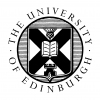© Pint of Science, 2025. All rights reserved.
Join us on Thursday, September 21st to celebrate National Postdoc Appreciation Week (NPAW) with Pint of Science and SULSA! We will have talks from two fantastic postdoctoral researchers in plant sciences, Dr Damian Balfagon Sanmartin and Dr Frank Machin
There will be goody bags and refreshments afterwards to encourage networking, kindly sponsored by Proteintech
#NPAW2023 #CelebratePostdocs @proteintech @pintofscience @SULSAtweets
There will be goody bags and refreshments afterwards to encourage networking, kindly sponsored by Proteintech
#NPAW2023 #CelebratePostdocs @proteintech @pintofscience @SULSAtweets
Transcriptional regulation in response to high light and heat stress combination
Dr Damian Balfagon Sanmartin
(Postdoctoral Researcher)
The co-occurrence of two or more stress factors in agricultural systems is common and, according to recent climate change models, the likelihood of plants encountering new or more severe combinations of abiotic stresses in the near future is expected to be higher than previously estimated. Studies have identified specific regulatory transcripts that are unique to specific stress combinations, highlighting the importance of studying abiotic stress combination in plants. In our study, we aimed to elucidate the impact of high light and heat stress combinations (HL+HS) on Arabidopsis thaliana.
New Insights into Dedifferentiation and Cell Culture
Dr Damian Balfagon Sanmartin
(Postdoctoral Researcher)
Dr Frank Machin
(Postdoctoral Researcher)
Plant regeneration and cell culture are economically important processes but the molecular mechanisms governing plant cell culture remain poorly understood. Cell cultures derived from different tissues can display distinct phenotypes, indicating that cells do not fully de-differentiate but retain some properties from their progenitor tissue. To investigate this, we performed single cell RNA-sequencing experiments on Arabidopsis callus cultures. In this talk, I will present our recent insights that identify new cell types present in callus cultures which raise new questions about cell fates.
Map data © OpenStreetMap contributors.


